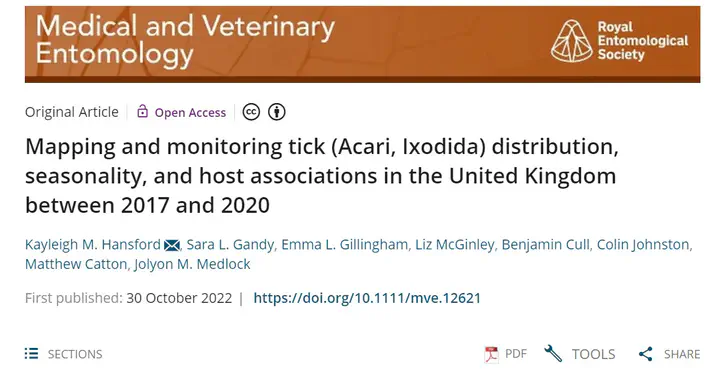Mapping and monitoring tick (Acari, Ixodida) distribution, seasonality, and host associations in the United Kingdom between 2017 and 2020

Abstract
Tick‐borne disease risk is intrinsically linked to the distribution of tick vector species. To assess risk and anticipate disease emergence, an understanding of tick distribution, host associations, and seasonality is needed. This can be achieved, to some extent, using passive surveillance supported by engagement with the public, animal health, and public health experts. The Tick Surveillance Scheme (TSS) collects data and maps tick distribution across the United Kingdom (UK). Between 2017 and 2020, 3720 tick records were received and 39 tick species were detected. Most records were acquired in the UK, with a subset associated with recent overseas travel. The dominant UK acquired species was Ixodes ricinus, the main vector of Lyme borreliosis. Records peaked during May and June, highlighting a key risk period for tick bites. Other key UK species were detected, including Dermacentor reticulatus and Haemaphysalis punctata as well as several rarer species that may present novel tick‐borne disease risk to humans and other animals. Updated tick distribution maps highlight areas in the UK where tick exposure has occurred. There is evidence of increasing human tick exposure over time, including during the COVID‐19 pandemic, but seasonal patterns remain unchanged. The risk of tick‐borne disease is linked to the distribution, seasonal activity and host associations of vector species, all of which can be informed by surveillance and citizen science. The Tick Surveillance Scheme in the UK monitors distribution changes in Ixodes ricinus and other native or imported vector species that may present novel health risks The increasing number of records received during the last 10 years and new areas of distribution for Ixodes ricinus suggests a possible shift in risk to public and animal health.